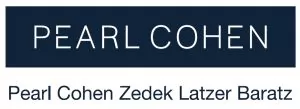Introduction
The Supreme Court recently held that plaintiffs pursuing trademark infringement claims can get significant damages awards even without showing the defendant intentionally infringed (meaning, acted willfully) the plaintiff's mark. Although the Supreme Court clarified that plaintiffs do not need to prove the defendant acted willfully to force the defendant to give up the profits it made as a result of the infringement, evidence showing the defendant acted with some awareness of its misconduct will likely still be important, particularly in jury trials. This decision, Romag Fasteners, Inc. v. Fossil, Inc., 590 U.S. ___ (2020), has significant implications in litigation planning and strategy, and in gaining greater insight into the still relatively new Justice Gorsuch's judicial style as businesses and litigants are operating in an increasingly uncertain business environment.
Procedural History and Factual Background: The Second Circuit Required a Finding of Willfulness to Award Trademark Infringement Damages
Romag Fasteners, Inc. ("Romag") appealed from an unfavorable position in which a jury found defendant Fossil, Inc. ("Fossil") liable for infringement, but the judge would not award damages because the jury did not find that Fossil acted willfully in its acts of trademark dilution under Lanham Act § 1125(a).
Romag sells magnetic snap fasteners used in wallets, handbags, and other leather goods. Fossil designs, markets, and distributes fashion accessories including leather handbags and other small leather goods. Starting in 2002, Romag and Fossil agreed that Fossil would use Romag fasteners in particular Fossil products. Between 2002 and 2008, Fossil purchased tens of thousands of Romag fasteners, manufactured in China. The agreement was productive until 2010, when Romag discovered that Fossil's hired factories in China "were using counterfeit Romag fasteners – and that Fossil was doing little to guard against the practice."1 Romag then sued Fossil in 2010 for patent and trademark infringement, alleging knowing and willful adoption and nonconsensual use of the Romag mark.2
Even though the jury found that Fossil had infringed Romag's trademarks and patents, it found that Fossil did not act willfully, meaning with some level of intentionality and maliciousness, but still awarded Romag approximately $7 million in damages. Still, the district court would not allow Romag to recover those damages because the jury found that Fossil did not act willfully. At the outset, this case highlights the importance of making carefully considered decisions as to where to file suit, considering the circuit split on the damages issue at the time of filing. Had Romag wanted or been able to file in another circuit that did not apply the willfulness prerequisite, it may have initially been successful in obtaining a damages award.
SCOTUS Decision: Willfulness as an Important but not Essential Consideration in Damages Awards
The Supreme Court unanimously and easily held that a plaintiff pursuing a trademark dilution claim (meaning, "conduct that lessens the association consumers have with a trademark")3 can force the defendant to give up its profits earned by infringement without proving the defendant acted maliciously in doing so. Still, the Court made clear that as a practical matter – i.e., to convince a jury the defendant acted wrongly – evidence showing the defendant acted with awareness and intentionality in infringing the plaintiff's mark, is very relevant even if it is not absolutely required.4
Practical Implications: Consider and Present Claims Carefully
The Court's decision unanimously rejected a finding of willfulness as a prerequisite to obtaining a powerful trademark infringement remedy: disgorgement of a defendant's profits as a result of the infringement. This decision will – and should – undoubtedly change litigants' strategy and preparation even before filing suit.
First, this decision reinforces the importance of selecting and presenting the appropriate claims – and defenses – in filings and to a jury (and whether a litigant wants to demand a jury at all). The Court's examination of Lanham Act claims with mental state requirements is a guidepost as litigants assess their claims, defenses, and counterclaims.
Second, parties may be more willing to settle and at higher prices because claimants nationwide may now obtain higher damages awards for trademark dilution without showing willfulness. Similarly, parties would be wise to engage experts earlier to get a clearer sense of the amount of profits an infringer gained as a result of the infringement to help guide litigation and settlement strategy.
Third, willfulness is still a very relevant consideration. Practically, juries are likely to consider defendants' willful conduct as they weigh equities. In telling a story of a defendant's infringement, a plaintiff would still be wise to present as much evidence as possible that the defendant acted willfully. This type of evidence not only bolsters any story of wrong against right, but also may increase the likelihood of a more significant damages award and even an award requiring a defendant to disgorge its profits gained as a result of the trademark abuse.
Conclusion
In settling a circuit split and eliminating any willfulness prerequisite to obtaining disgorgement of profits, a powerful remedy against trademark infringement is now more readily available. The Court's unanimity on the issue, and relatively brief decision, provides important considerations for trademark litigants, as trademark law continues to be a critical way for businesses to protect their brands in an increasingly uncertain social and economic climate.
Footnotes
1 Romag Fasteners, Inc. v. Fossil, Inc., 590 U.S. __ (2020) ("Romag") at 2.
2 Id. at 1-2.
3 Id. at 3.
4 Id. at 7.
Originally published Apr 28, 2020.
The content of this article is intended to provide a general guide to the subject matter. Specialist advice should be sought about your specific circumstances.

